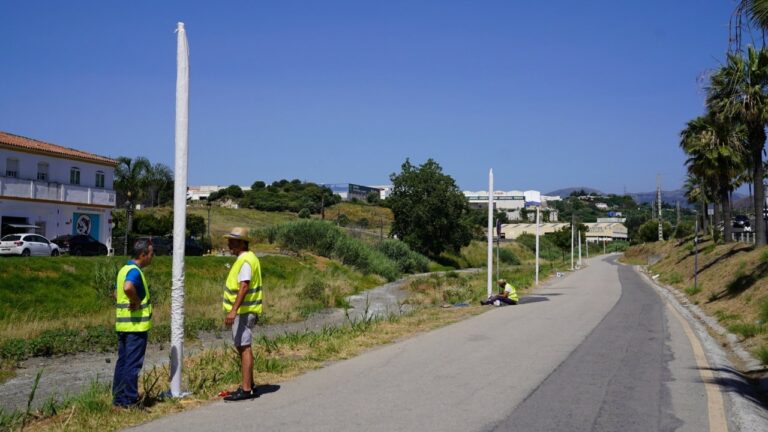The city administration has initiated a process to install solar street lights on additional roads and pathways in order to enhance safety measures and prioritize energy efficiency and cost savings. Estepona City Council is persistently advancing its efforts to enhance the lighting infrastructure in public areas across the municipality. Following the ongoing initiatives in suburban zones and the coastal strip, involving an investment of 1.7 million euros, the council has launched a tender for the installation of solar-powered street lights in thirteen more streets in the outskirts. The primary objective of this program is to equip these areas with lighting solutions that comply with energy efficiency standards, hence the selection of solar streetlights equipped with LED luminaires. The project encompasses the lighting of 13 streets, predominantly situated on the peripheries of the city. Among the streets included are Rosalía de Castro, Vereda de los Frailes, Camomila, Menta, Aloe, Vial Velerín-Hospitén, Caserío, Tolox, Alquería, Quintana, Masía, urbanization Cortijo Casareño, and Padre Luis García Cerezo. The introduction of these street lights, incorporating photovoltaic technology, is anticipated to significantly reduce energy consumption, resulting in lower electricity expenses, while simultaneously enhancing visibility and safety for pedestrians and motorists. The installation of 247 streetlights is scheduled, with a base bidding budget of 250,000 euros. Deputy Mayor for Services and External Control, Blas Ruzafa, emphasized that this initiative forms part of a comprehensive program aimed at illuminating various parts of the city, with a strong emphasis on energy efficiency, hence the adoption of solar streetlights with LED luminaires. Public lighting accounts for a significant portion of the electricity consumption of municipal entities, underscoring the importance of enhancing efficiency. The council has proposed the deployment of autonomous solar streetlights as a viable solution for illuminating roads in the municipality lacking this more efficient lighting system. By incorporating these luminaires with photovoltaic technology, energy consumption is expected to witness a considerable reduction, consequently leading to lower electricity costs. Concurrently, the council is actively exploring additional measures to be integrated into the lighting plan for the current and upcoming years, which are presently under evaluation.
Expanding the Illumination Project in Suburban Areas with Thirteen New Streets







